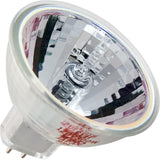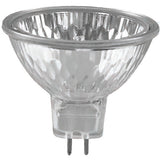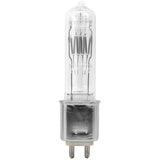What are ANSI Coded Light Bulbs?
Posted by Nick on for ProLampSales

It's time to talk about a range of bulbs that have been misunderstood and defy easy classification. These are commonly-referred to as ANSI bulbs in the lighting industry, but consumers are often perplexed about them.
- "I just pulled a bulb out of my old slide projector, how do I know what to replace it with?"
- "How do you know that's the bulb for my car's brake light? These four all look the same."
- "I bought a used movie projector at a garage sale, but it needs a light bulb. How do I know which one is correct?"
- "'ENX' -- what do these three letters mean on this light bulb? Are they important?"
These are just some of the questions people have called us with over the years, trying to solve the myster of an ANSI bulb they need. And in other cases where we're trying to help a customer, one of our most common questions is, "is there a three-letter code or number on the bulb you have?"
In all of these cases, what we're looking for is a specific ANSI code, either alphabetical or numeric. But what is an ANSI code, and what do they have to do with light bulbs?
ANSI stands for the American National Standards Institute. Here is how Wikipedia describes the Institute.
ANSI accredits standards that are developed by representatives of other standards organizations, government agencies, consumer groups, companies, and others. These standards ensure that the characteristics and performance of products are consistent, that people use the same definitions and terms, and that products are tested the same way. ANSI also accredits organizations that carry out product or personnel certification in accordance with requirements defined in international standards.
For light bulbs, ANSI codes are a type of shorthand. Let's look at a quick example.
Example 1: ENX
Numerous manufacturers make a bulb called an ENX. The individual manufacturer will have their own part number for it (54984 for Osram, 1000337 for Ushio, for instance), but the ENX code refers to the specifications for that bulb.
All ENX coded light bulbs will have the same technical specifications. Some of these are the following.
- A halogen lamp type
- 82 volts
- 360 watts
- MR16 lamp shape
- GY5.3 base type
If you see a lamp coded ENX that doesn't have all of these specifications, something is wrong! Either the website has the wrong data for the right bulb, or the bulb is the wrong one.
Example 2: FCS
Another very popular example is the FCS bulb. It also uses a three-letter code, but looks completely different from the ENX. However, all FCS bulbs will share the same specifications, determined by ANSI as meeting their technical definition of an FCS light bulb.
Again, numerous companies make a version of the FCS bulb and have their own specific part number for it (54263 for Osram, 206078 for Philips, 1000492 for Ushio). However, all mention that this part meets the technical specifications of an ANSI FCS bulb, which include some of the following.
- A halogen lamp type
- 24 volts
- 150 watts
- T3.25 lamp shape
- G6.35 base type
ANSI Bulbs Are Everywhere
There are hundreds of ANSI codes defining all sorts of light bulbs used in almost any application, from projection and medical equipment to automotive lighting.
This standardization makes it easier for manufacturers to produce and sell light bulbs that meet the needs of various equipment, but these codes are usually meaningless to consumers who just want the right bulb to replace the one that blew out. And seeing a strange code like "CYX," "DWE," or "EKE" isn't self-explanatory.
As lighting technology increasingly moves towards LED, old halogen and incandescent ANSI bulbs are likely to be replaced by equivalent LEDs. This could consign some of these ANSI coded lamps to the past, but knowing the original bulb that went in an old piece of equipment can make it easier to find an LED replacement.
Featured Products (View All)
0 comment




